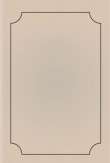قراءة كتاب Jewish Literature and Other Essays
تنويه: تعرض هنا نبذة من اول ١٠ صفحات فقط من الكتاب الالكتروني، لقراءة الكتاب كاملا اضغط على الزر “اشتر الآن"
Rappaport, celebrates a brilliant renascence, such as the poet describes: "In the distant East the dawn is breaking,—The olden times are growing young again."
Die Gottesdienstlichen Vorträge der Juden, by Zunz, published in 1832, was the pioneer work of the new Jewish science, whose present development, despite its wide range, has not yet exhausted the suggestions made, by the author. Other equally important works from the same pen followed, and then came the researches of Rappaport, Z. Frankel, I. M. Jost, M. Sachs, S. D. Luzzatto, S. Munk, A. Geiger, L. Herzfeld, H. Graetz, J. Fürst, L. Dukes, M. Steinschneider, D. Cassel, S. Holdheim, and a host of minor investigators and teachers. Their loving devotion roused Jewish science and literature from their secular sleep to vigorous, intellectual life, reacting beneficently on the spiritual development of Judaism itself. The moulders of the new literature are such men as the celebrated preachers Adolf Jellinek, Salomon, Kley, Mannheimer; the able thinkers Steinheim, Hirsch, Krochmal; the illustrious scholars M. Lazarus, H. Steinthal; and the versatile journalists G. Riesser and L. Philipson.
Poetry has not been neglected in the general revival. The first Jewish poet to write in German was M. E. Kuh, whose tragic fate has been pathetically told by Berthold Auerbach in his Dichter und Kaufmann. The burden of this modern Jewish poetry is, of course, the glorification of the loyalty and fortitude that preserved the race during a calamitous past. Such poets as Steinheim, Wihl, L. A. Frankl, M. Beer, K. Beck, Th. Creizenach, M. Hartmann, S. H. Mosenthal, Henriette Ottenheimer, Moritz Rappaport, and L. Stein, sing the songs of Zion in the tongue of the German. And can Heine be forgotten, he who in his Romanzero has so melodiously, yet so touchingly given word to the hoary sorrow of the Jew?
In an essay of this scope no more can be done than give the barest outline of the modern movement. A detailed description of the work of German-Jewish lyrists belongs to the history of German literature, and, in fact, on its pages can be found a due appreciation of their worth by unprejudiced critics, who give particularly high praise to the new species of tales, the Jewish village, or Ghetto, tales, with which Jewish and German literatures have latterly been enriched. Their object is to depict the religious customs in vogue among Jews of past generations, their home-life, and the conflicts that arose when the old Judaism came into contact with modern views of life. The master in the art of telling these Ghetto tales is Leopold Kompert. Of his disciples—for all coming after him may be considered such—A. Bernstein described the Jews of Posen; K. E. Franzos and L. Herzberg-Fränkel, those of Poland; E. Kulke, the Moravian Jews; M. Goldschmied, the Dutch; S. H. Mosenthal, the Hessian, and M. Lehmann, the South German. To Berthold Auerbach's pioneer work this whole class of literature owes its existence; and Heinrich Heine's fragment, Rabbi von Bacharach, a model of its kind, puts him into this category of writers, too.



